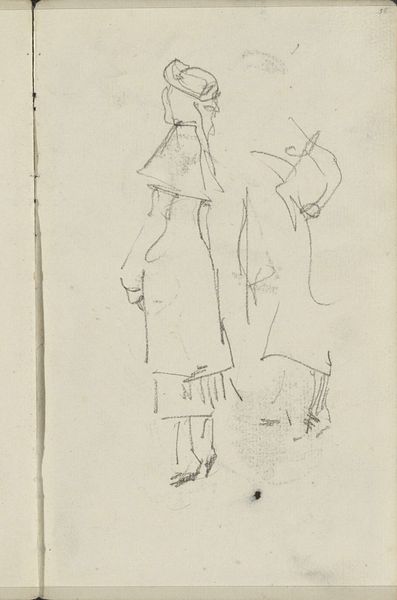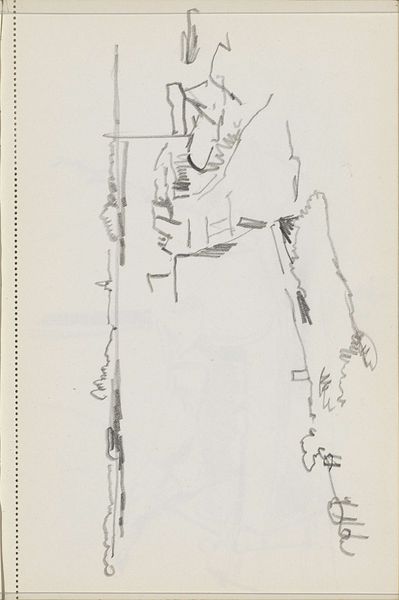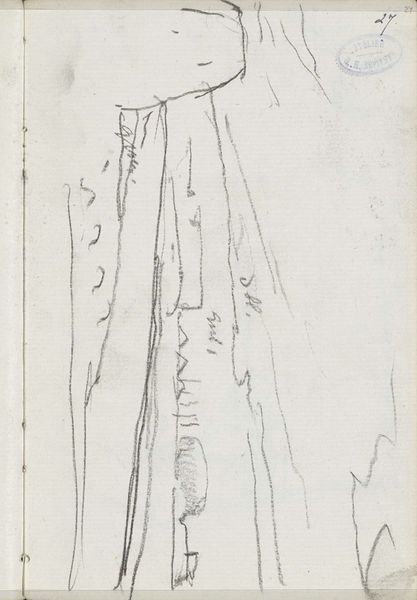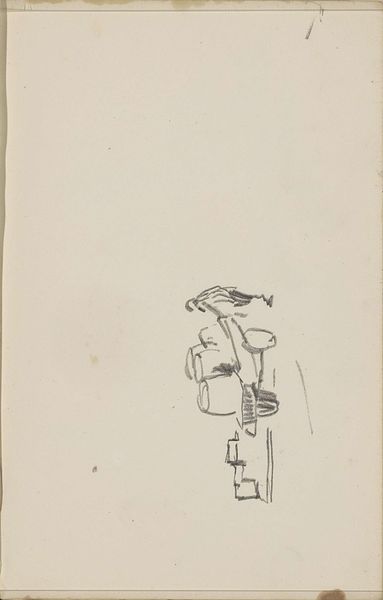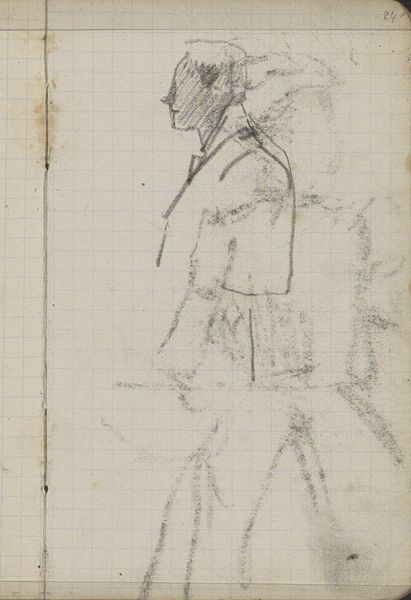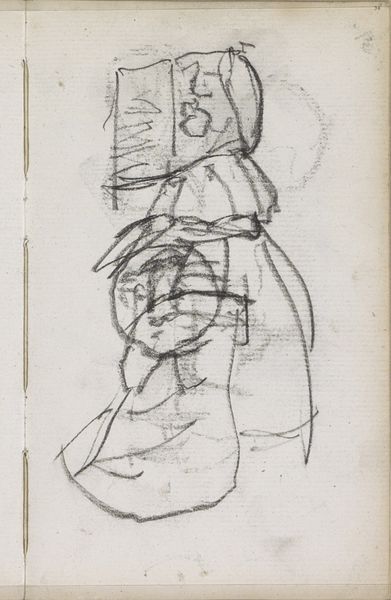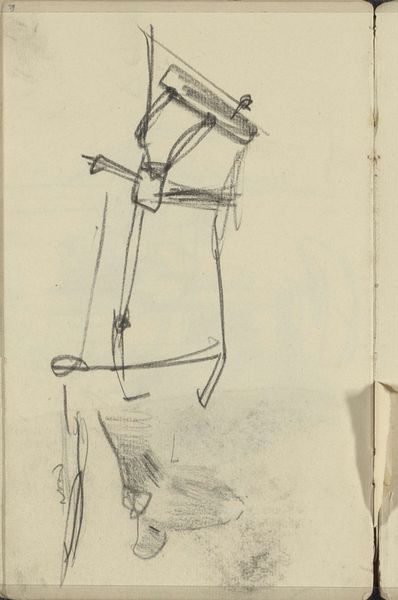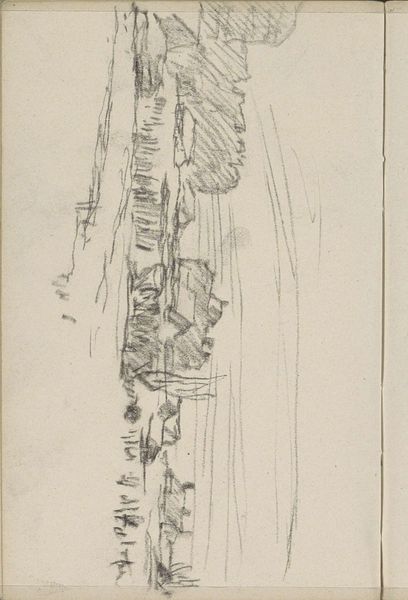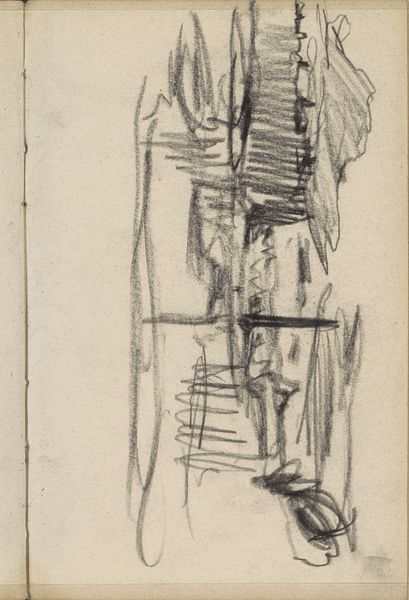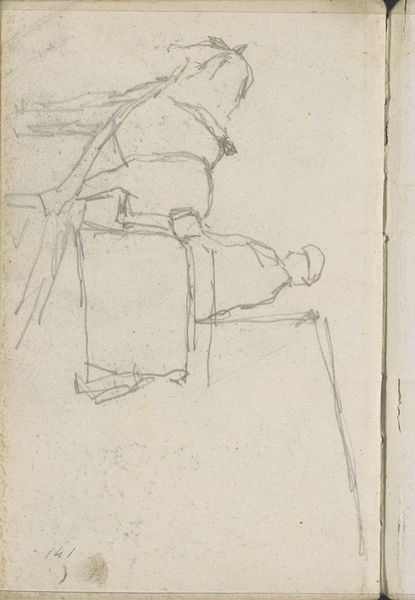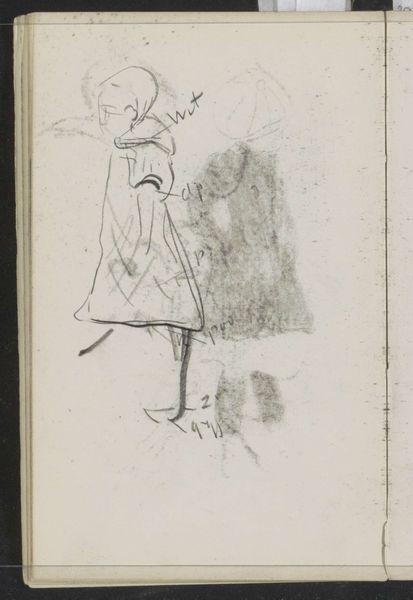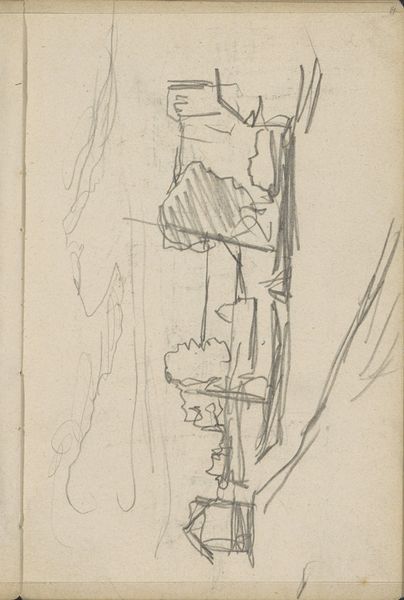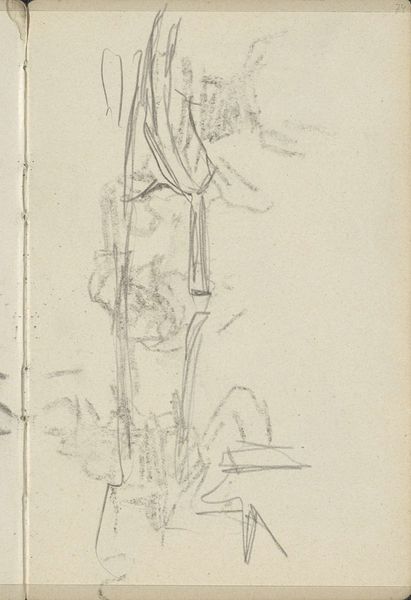
Figuur op een aangemeerde boot, mogelijk in de Prinseneilandsgracht Possibly 1907 - 1911
0:00
0:00
Copyright: Rijks Museum: Open Domain
Curator: What a wonderfully understated drawing, this "Figuur op een aangemeerde boot, mogelijk in de Prinseneilandsgracht" by George Hendrik Breitner. It’s likely from around 1907-1911. Editor: Immediately, the composition strikes me. The sketch is sparse, almost fragile. The stark use of graphite and charcoal emphasizes the industrial aspect of the scene. Curator: Breitner, deeply involved with documenting Amsterdam, was keenly aware of urban life. This drawing provides insight into the working class that inhabited those spaces. Think about how industrialisation impacted labour in early 20th-century Netherlands, focusing specifically on canals, the docks and people whose jobs and existence revolved around such landscape. Editor: Indeed, the rough textures and linear style suggest rapid execution, mirroring the hectic pace of work around the canals. There is no romanticism here, just a recording of labor and what materials facilitate its execution in terms of access between places via the Prinseneilandsgracht canal. Curator: I'd like to draw our attention back to the figure itself. How would you interpret their stance, posture, perhaps even social class, based on how Breitner depicted them? And what are the racial politics related to these portrayals? Editor: It's hard to make firm judgments without much detail, but there’s a weary resignation suggested in that stooped figure. I suspect an artist like Breitner must have seen labour in such urban zones not only in terms of social status but also how materials shaped how workers, whether on the canals or land, experienced Amsterdam during industrial transformations. Curator: So we're both left contemplating the complex relationship between labor, urban transformation, and individual experience, captured by Breitner's efficient application of graphite and charcoal. Editor: A preliminary, quickly realized work—drawing in graphite and charcoal—is often as revelatory as a finished oil painting because the bare bones of art's making and artists´ way of living through material necessity remain in front of us.
Comments
No comments
Be the first to comment and join the conversation on the ultimate creative platform.
